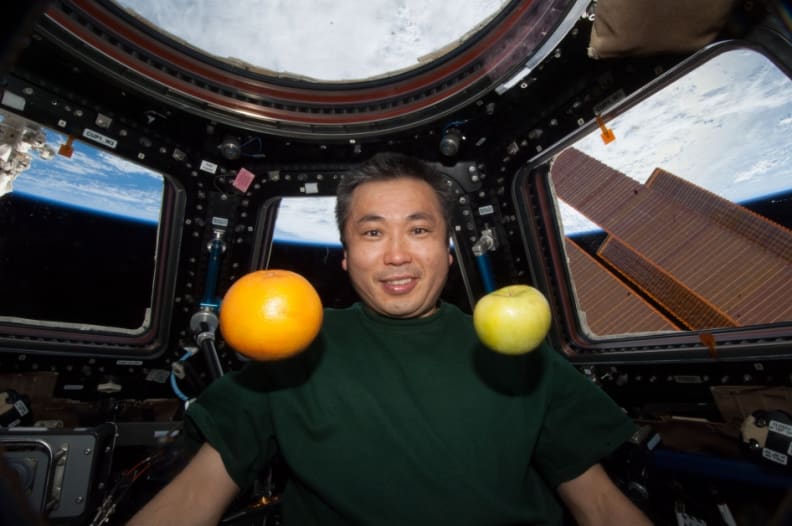 Credit:
Sandra Dans via Canva.com
Credit:
Sandra Dans via Canva.com
Products are chosen independently by our editors. Purchases made through our links may earn us a commission.
Since the beginning of the space race, the American public has been fascinated by how astronauts eat. While you may be accustomed to the sweet, drippy mess that is "earth ice cream" (and maybe even make your own ice cream at home), it's quite different in zero-g.
"Astronaut ice cream" is an evergreen impulse buy in museum gift shops across the country, and Tang has gotten nearly unlimited marketing mileage from its presence on-board NASA missions.
Special foods have always been required for consumption in space, since few off-the-shelf products have the longevity or rigorous packaging needed to pass muster. Space food must be compact, while offering enough nutrition to support strenuous zero-g activity.

Commander Koichi Wakata enjoys fresh fruit while on orbit in the ISS's Cupola. (Image credit: NASA/JAXA)
Then there's the mess factor. Without gravity to pull crumbs to the ground, foods with loose particles can cause all kinds of problems. That means bread is a no-go, and tortillas are the sandwich staple of choice.
While you might imagine pureed goops in tube and freeze-dried bricks are routine for spacefarers, the reality is quite different. In fact, the astronauts aboard the International Space Station hail from all over the world, and have brought a diverse menu to the spaceborne dinner table.
Korea, for instance, reportedly spent a million dollars to concoct a space-friendly take on kimchi for its astronaut Yi So-yeon. JAXA, the Japanese space agency, worked with Nissin Foods (whose founder, Momofuku Ando, invented instant ramen) among others to prep sushi, noodles, and other homespun delights for its astronauts.
Of course, Russia has been in space longer than anyone else, and that means all ISS astronauts enjoy a rotating menu of around 300 Russian meals and snacks, including (you guessed it!) space borscht.
One constant for all space food is that nothing can be served up raw. Dishes must either be extremely shelf-stable or rehydratable. Foods like chicken and steak are thermostabilized, meaning they're completely cooked to kill bacteria and other potential threats before blastoff. Refrigerated foods are also occasionally consumed on board. Every few months, astronauts get a taste of fresh fruits and veggies from terra firma, but they must be consumed quickly.
With no access to a conventional kitchen, astronauts use special convection-based food warmers to heat frozen entrees to a more palatable temperature. Preparing dehydrated foods, meanwhile, is an integral part of the design of the ISS habitation module. A rehydration unit is built into a console; astronauts simply plug in their meal, turn the dial to the setting indicated on the pouch, and hit a button. The correct amount of hot water is dispensed automatically. Smoothies and coffee are similarly rehydrated when astronauts need a drink.
Seasonings and spreads are important tools for keeping monotony at bay. Since living in space can negatively impact astronauts' sense of smell, extra flavoring goes a long way toward making rehydrated and frozen food taste better. Tabasco sauce, in particular, is in high demand in microgravity. Squeeze bottles with liquid dissolved pepper and salt, ketchup packets, and mayonnaise let astronauts spice things up a bit.
And to prevent spills and loose food floating around the station, everything the astronauts eat can be attached with velcro to the communal table in the station galley. Juggling is the last thing they need to be doing during dinner.
It goes without saying that living in a tight situation like the ISS is incredibly taxing, both physically and mentally, so every little comfort can go a long way to making for successful missions in space.
